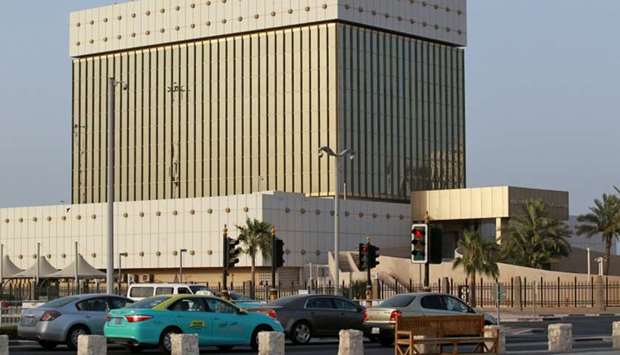Qatar’s payment system was worth QR4.1tn in 2018, with the nation-wide NAPS handling bulk of the transactions, QCB data has shown.
In terms of the value of transactions, SWIFT system handled over 63% of the total value, while NAPS (local) handled 89% of the total volume of transactions, Qatar Central Bank said in its 10th Financial Stability Review (FSR).
The payment systems in Qatar comprising of retail and wholesale segment grew in comparison to the previous year, both in value and in volume terms.
High-value transactions mostly took place through the SWIFT system, while small-value retail transactions took place in huge volumes through the NAPS (local) system.
The secure electronic payment system in Qatar — QATCH — handles the financial transactions, in Qatari riyals, among the banks within Qatar. Last year, transactions under QATCH increased in both value (7.1%) and volume (12.4%) terms over the previous year, QCB said.
Even though transactions processed by SWIFT system saw a decline in value of (-) 23.3% in 2018 over the previous year, the growth in volume of 35.3% indicated that higher number of small value SWIFT transactions took place during the year.
This was also corroborated by the fact that electronic cheques clearing (ECC) declined in both value and volume by 8.9% and 1.2%, respectively, in 2018.
This, QCB noted demonstrated a continued shift from paper-based instruments (cheques) to electronic mode of transactions.
The availability of liquidity in the banking system was adequate as demonstrated by increase, in both value as well as volume terms, in both QMR deposits and loans activity processed through the payment and settlement systems, compared to the same during previous year.
The value and volume of transactions through ATMs and PoS increased over the previous year in the local market while the same declined in the GCC region.
The fall in GCC-wide value and volume of ATM/PoS transactions could be a reflection of decline in cross-border movements as a fallout of the blockade that started in mid-2017. However, the impact was neutralised subsequently, QCB said.
"Payment Systems being an important and critical component of the financial infrastructure of a country, it is imperative to ensure the resiliency of the payment and settlement system in the larger context of a sound and stable financial system," Qatar Central Bank said.
Towards this end, QCB launched its Second Strategic Plan for financial sector regulation during 2018, which was a result of successful co-operation among three regulatory bodies — Qatar Central Bank, Qatar Financial Markets Authority (QFMA) and Qatar Financial Centre Regulatory Authority (QFCRA).
The payment systems in Qatar comprising of retail and wholesale segment grew in comparison to the previous year, both in value and in volume terms.
High-value transactions mostly took place through the SWIFT system, while small-value retail transactions took place in huge volumes through the NAPS (local) system.
The secure electronic payment system in Qatar — QATCH — handles the financial transactions, in Qatari riyals, among the banks within Qatar. Last year, transactions under QATCH increased in both value (7.1%) and volume (12.4%) terms over the previous year, QCB said.
Even though transactions processed by SWIFT system saw a decline in value of (-) 23.3% in 2018 over the previous year, the growth in volume of 35.3% indicated that higher number of small value SWIFT transactions took place during the year.
This was also corroborated by the fact that electronic cheques clearing (ECC) declined in both value and volume by 8.9% and 1.2%, respectively, in 2018.
This, QCB noted demonstrated a continued shift from paper-based instruments (cheques) to electronic mode of transactions.
The availability of liquidity in the banking system was adequate as demonstrated by increase, in both value as well as volume terms, in both QMR deposits and loans activity processed through the payment and settlement systems, compared to the same during previous year.
The value and volume of transactions through ATMs and PoS increased over the previous year in the local market while the same declined in the GCC region.
The fall in GCC-wide value and volume of ATM/PoS transactions could be a reflection of decline in cross-border movements as a fallout of the blockade that started in mid-2017. However, the impact was neutralised subsequently, QCB said.
"Payment Systems being an important and critical component of the financial infrastructure of a country, it is imperative to ensure the resiliency of the payment and settlement system in the larger context of a sound and stable financial system," Qatar Central Bank said.
Towards this end, QCB launched its Second Strategic Plan for financial sector regulation during 2018, which was a result of successful co-operation among three regulatory bodies — Qatar Central Bank, Qatar Financial Markets Authority (QFMA) and Qatar Financial Centre Regulatory Authority (QFCRA).


